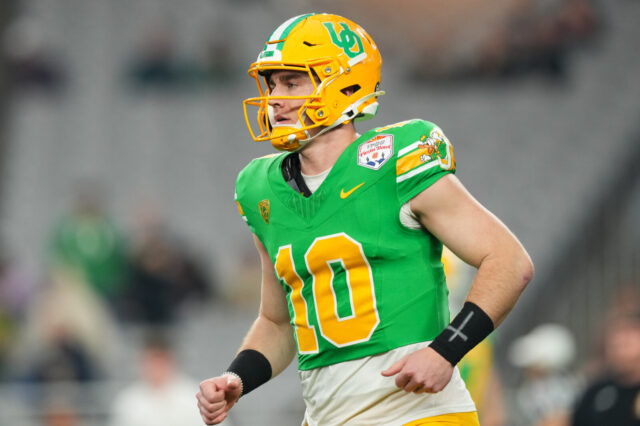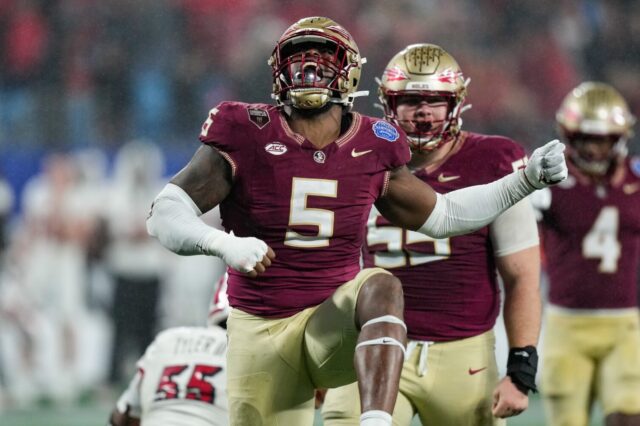If one examines the Broncos free agency moves, it’s a bit of a mixed bag.
The staff at Mile High Sports essentially graded the team’s recent moves as a C+/B- average. And on paper, that’s about how it looks. The Broncos have improved in some areas, but in others, the net effect seems to be pretty minimal.
Take for example, the “swap” of Chris Harris Jr. for A.J. Bouye. There’s nothing wrong with Bouye at all – a good pickup for all intents and purposes. But is he better than Harris Jr.? Since the trade was made, that’s been subject to debate (especially given the relatively small number tied to Harris Jr.’s new contract with the Chargers). Some have even posed the question, “Why not employ both?”
What about the signing of Jurrell Casey? Most view it as a good one, but then again, what’s the net gain if Shelby Harris and Derek Wolfe are no longer Broncos, a situation that appears to be still somewhat fluid.
And then there’s Melvin Gordon, a flashy signing – perhaps the only one of the Broncos’ free-agency period that caught the attention of the average fan – yet it’s another move that comes with pros and cons. Gordon’s upside when healthy is immense, but so is his price tag – especially when compared to the value of a running back acquired via the draft. With Gordon’s inclusion in the Broncos backfield, it’s not quite as simple as “Gordon in; Andy Janovich and Royce Freeman out.” There’s also the fact of the matter: Phillip Lindsay is already a damn good back. And that makes many question the real need for a premium signing at running back.
Have the Broncos improved? Probably. But “how much” is certainly up for debate given some of the departures (or assumed departures) taking place. No team can keep everyone and sign improvements, but an examination the comings and goings in Denver, the “net” improvement, at least on paper, doesn’t appear to be extraordinary.
With a ton of cap space to work with, have the Broncos spent their money wisely?
Until the season kicks off, that’s likely inconclusive. However, what each of Denver’s signings do seemingly signify, is that Vic Fangio is putting his stamp on the roster.
Going back to the Harris-Bouye swap. The most common theory on this maneuver is that Bouye is simply a better fit for what a Vic Fangio defense likes to do. While Harris traditionally has been a shut down corner in man-to-man schemes, Bouye has excelled in zone coverages, which is more in line with Fangio’s preference.
The same might be said for the addition of Casey, who’s been a noted run-stuffing, clog-the-middle defensive lineman his entire career. That, too, is a hallmark of a Vic Fangio defense. That’s not to say that Wolfe and Harris couldn’t perform that task, it’s just that they’re slightly different “types” of defensive linemen. Casey might more closely resemble Mike Purcell, who was inserted early in the season and obviously favored over Adam Gotsis (another player who plays a very different style than Casey).
On the offensive side of the ball, there’s still a great deal of work to be done. The Broncos haven’t addressed their need at wide receiver and could still use some help on the offensive line. Perhaps these deficits will be addressed through the draft. Regardless, the blue print points toward acquiring players who will best fit in Pat Shurmur’s offense, and who will best compliment Drew Lock (perhaps explaining the hefty expenditure in the Broncos backfield).
If you’re of the belief that an offseason of free agency (and trades) and the draft can reverse the fortunes of a team, the Broncos recent moves might not seem so convincing. On the other hand, if you believe that a roster must be tailored to the style of a coach, the Broncos appear to be quietly rebuilding around not only needs, but their head coach’s style.
Perhaps Vic Fangio has convinced John Elway of an old Bill Parcells axiom: “If they want you to cook the dinner; at least they ought to let you shop for some of the groceries.”
In looking at the Broncos moves of late, it would seem that Fangio is filling up his cart.



